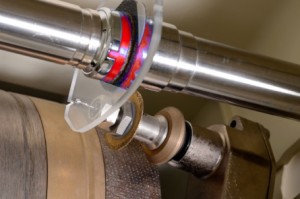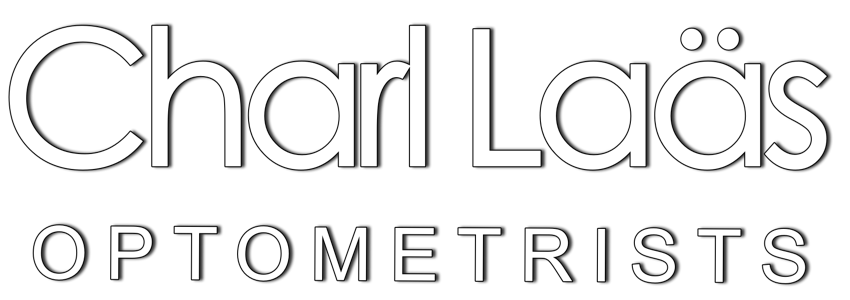
Fitting of spectacles started in earnest again today.
A variety of fit types were to be completed, but there was one that required more time than the others today. From the outset it seemed pretty straightforward, but I reasoned that it would cause problems and so attempted to improve on my fitting accuracy.
The lens was a CR39 (plastic) 35-seg Flattop bifocal, a lens used for the presbyopic customer who requires a wide reading area. Furthermore, it had the addition of a high end anti-reflective coating (ARC).
The combination of coating and segment was going to be problematic.
The advancement of multi layered anti-reflective coatings has led to some rather innovative additions over the past few years. One of which, is a layer that repels water and oil. In other terms a hydrophobic and lipophobic layer.

Lens blocked and being drilled in the Lex Auto edger
The problem with this, is that the adhesive tabs used to mount the lens into most modern lens edging equipment, now also have trouble adhering to the surface of the lens.
A solution to this problem has already been manufactured, with the advent of a non-slip celluloid tab or laminate that is placed between the lens and the adhesive tab. Unfortunately, unlike glass flattop bifocals where the segment of the lens is flush with the rest of the lens, the platic lens retains a “step”.
The “step” would allow an air pocket under the celluloid tab which would mean that under grinding conditions in the automatic lens edger, the lens had a greater chance of twisting or slipping.
To solve the problem I placed half a celluloid tab above the segment, followed by half of an adhesive tab. With these in place, I placed a full celluloid tab and a full adhesive tab over the halves. The result still had an air pocket, but it was significantly less than before. It was definitely more secure than just the standard fitting procedure. I also reasoned that the compression of the clamping mechanism inside the automatic edger was going to lessen the amount of air under the tabs.
Twisting of the lenses during grinding was avoided.


Leave a Comment